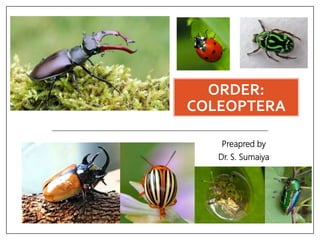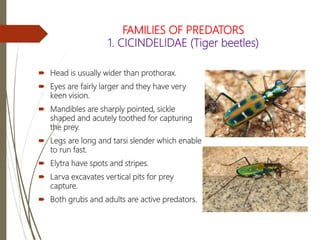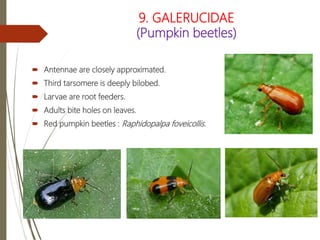This document provides an overview of the order Coleoptera (beetles). It describes their key characteristics including 11-segmented antennae, chewing mouthparts, and hardened forewings called elytra that cover delicate hindwings. It outlines several families of beetles classified by their predatory, scavenging, or pest behaviors. Predator families include tiger beetles, ground beetles, water beetles, and fireflies. Scavenger families incorporate dung beetles and water scavenger beetles. Pest families comprise wood borers, grain borers, weevils, longhorn beetles, and white grubs - all of which can damage crops or stored products.





























